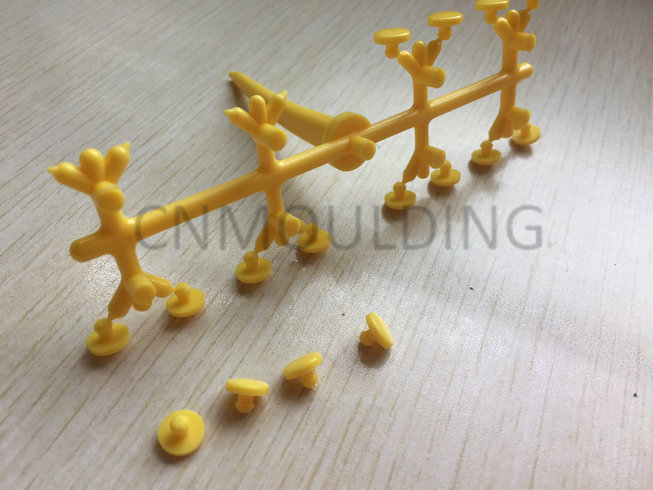Plastic Products in Daily life

The Plastic is used to make bicycle helmets, child safety seats, and airbags for cars. They are located in mobile phones, televisions, computers, and other electronic devices that make modern life possible. They are located on roofs, walls, floors, and insulation that make houses and buildings energy efficient.
In everyday life, we often see plastic injection molding products are following: polyester, polyethylene, polypropylene, high-density polyethylene, low-density polyethylene, polyvinyl chloride, and polystyrene. In fact,
these are our common “1-7” plastic.
Plastic molding PET:
Polyethylene terephthalate is used to make water bottles, Coke bottles, juice bottles, screen protective film, and another transparent protective film, usually colorless and transparent. Because it can heat to 70 ℃, so this is only suitable for cold drink bottles and warm drinks put hot liquids (such as hot water) or heating the deformation, there are harmful substances leaching; and the plastic products after using 10 months, maybe released carcinogenic, toxic to humans.
Advantages: high transparency injection molding products, can see the contents of the bottle; acid, can be loaded carbonated drinks; waterproof high and difficult to bleed.
Note: non-toxic, but the synthesis process may remain single, low molecular weight oligomers, and side reaction products. Such as diethylene glycol, these are a toxic, PET raw material for beverage bottles countries have strict standards.
Plastic molding HDPE:
High-density polyethylene is suitable for loading food and medicines, equipment cleaning supplies and bath products, shopping bags, garbage cans, etc. At present, the use of plastic bags in supermarkets and shopping malls are mostly made of such material, that can withstand 110 ℃ high temperature, indicating food bags can be used to dress the food. HDPE is widely used in a variety of translucent, opaque plastic containers with, a thick feel.
Advantages: relatively resistant to various corrosive solutions, and more are used in Chinese cleaning injection molding products, and bath products. Note: The dress cleaning supplies, and bath products bottles can be reused after cleaning, but these containers are usually not washed clean, and the residual material will become a breeding ground for bacteria, it is best not to recycle, especially in the full bloom cycle is not recommended as the Food and Drug the container uses.
Plastic molding PVC:
Polyvinyl chloride PVC is now used by the Chinese injection molding manufacturer of some cheap leather, floor mats, water pipes, etc.; Due to its good electrical performance has certain self-retardant properties, is widely used in the plastic manufacture of wire and cable sheath. In addition, PVC is widely used in industrial fields, especially for acid corrosion in high demand areas. Commonly used in raincoats, PVC plastic pipelines, water pipes, plastic switches, sockets
Advantages: high strength, resistance to climate change, and better corrosion resistance.
Note: this material can only heat 81 ℃, and therefore can not be used at higher temperatures. It is likely to precipitate toxic when used in the production of a large number of PVC plasticizers (plasticizing agents, such as DOP). And heat stabilizers contain heavy metals, and the synthesis is difficult to eliminate the presence of free monomers. And the high temperatures encountered in oil, carcinogenic so PVC in contact with the human body, especially in medicine and food applications, replaced by the PP, and PE basically.
low-density polyethylene (LDPE)
Plastic molding film and wrap, made of paper milk cartons, drink boxes and other packaging are using it as an inner foil. Utensils are used for the plastic film, not as a beverage container. Commonly used in: cling film, plastic film, toothpaste, or cleanser hose packaging. Pros: good ductility, use in life is extremely broad.
Note: LDPE products at higher temperatures due to softening or melting, should avoid the use of higher water temperatures under 100 ℃. Cling film at temperatures above 110 ℃, there will melt and, therefore, the food placed before the microwave, first remove the cling film wrapped.
Plastic molding polypropylene (PP)
Microwave meal made using this material, resistant to 130 ℃ high temperature. Transparency is poor, this is the only place in microwave plastic boxes that can be reused after careful cleaning. PP high hardness and surface gloss. PP is also a very broad range of use, everyday items such as packaging, toys, basins, buckets, hangers, cups, bottles, etc.; Engineering applications such as car bumpers.
PP spun yarn is known as polypropylene, textiles, non-woven fabrics, ropes, nets, and other products are common.
Commonly used in disposable juice, beverage cups, plastic plate, Lock & Lock crisper, and so on. Pros: good air permeability, and heat temperature up to 167 ℃, is the lightest plastic container. NOTE: If the temperature is too high.
The body will not have gas diffusion out. In addition, some microwave meal box body is made of PP. But the lid is made of the 6th PS, carefully checked before use. If such a situation should first remove the lid after heating. Products compared to PE, PP products have slightly better heat resistance, and typical Lock & Lock glass using temperature can reach 110 ℃. But then there is a high-temperature melting softening and dangerous and should be avoided.
Plastic molding polystyrene (PS)
Used in: ice cream containers, snacks, cheap transparent products, foam, CD boxes, cups, snacks, insulation material layer. Advantages: Transparency and heat resistance is superb, used to install high-temperature foods. Such as a bowl of instant noodles (now multi-use paper containers), cold resistance, and a variety of ice also love to use this container.
